
views
Hatching Tadpoles for Education at Home or School

Research the regulations for collecting and raising wild frogs in your area. Contact your local conservation department to ensure that you do this project safely and get any necessary permits. In Australia, for example, you will need to get a free permit in order to collect tadpoles for genuine educational reasons. Don’t trespass in order to collect eggs or tadpoles. Never collect eggs, tadpoles, or adults belonging to endangered species. Many kinds of frogs are threatened around the world. Find out which species of endangered frog lives in your area, and learn how to identify their eggs and tadpoles in order to avoid collecting them.
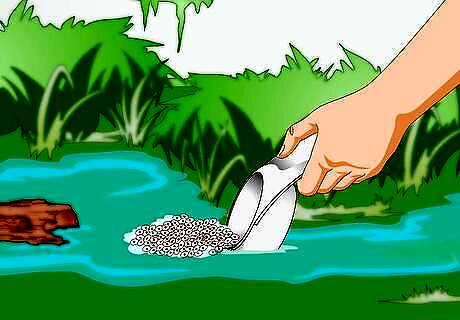
Collect eggs and larvae, also known as tadpoles. Visit a pond, small lake, or creek to find eggs or tadpoles in the spring to early summer. Use small jars or nets to capture the eggs or tadpoles. Measure the temperature of the water, and use insulated carrying cases to maintain that temperature in the jars you used to transport the eggs or tadpoles. Frogs lay small eggs in clusters or strands, usually under water and attached to vegetation. Tadpoles resemble small, dark fish with large heads. Your area may limit the number of eggs, tadpoles, or frogs you can collect, and it may require you to have a permit. Keep track of where you collected the eggs or tadpoles to facilitate return later on.

Set up a frog-friendly habitat using an aquarium, fish bowl, or large glass jar. A shallow bowl with a large rock in the middle works well; you don’t need deep water. Use water from your collection site, and add to it using only de-chlorinated water, providing about half a gallon per tadpole. Never use straight tap water. Aerate the water using an appropriate aeration device. If you have collected eggs, add them directly to the tadpole container – don’t keep them in a smaller container at first.
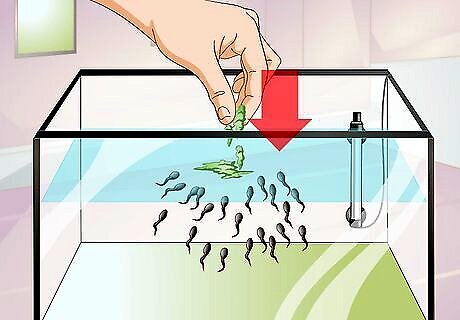
Feed the tadpoles. The natural food for tadpoles is algae and tiny plant matter. If you can’t obtain algae, you can replicate this at home or school by grinding up commercial goldfish food and by boiling and cooling lettuce or spinach (not cabbage). Feed tadpoles twice daily, removing any uneaten food within an hour to keep the water clean. Supplement this diet twice a week with flakes of hard-boiled egg yolks to add protein.
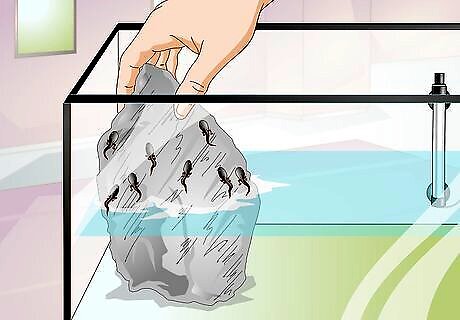
Change the habitat to accommodate the baby frogs. Tiny frogs need to be able to climb out of the water immediately to avoid drowning. Once tadpoles start to develop hind legs, provide a gently sloping area such as a small pile of rocks or natural (not treated) wood.
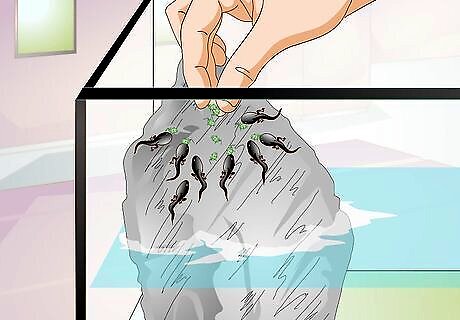
Feed the baby frogs. Frogs eat insects and small crustaceans. You can feed your baby frogs on meal worms or aphids (which can be found on infested houseplants).
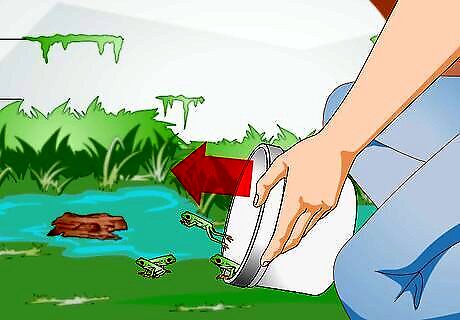
Release the frogs to their natural habitat as soon as possible. Use the notes you made earlier about where you collected the eggs or tadpoles. Release the frogs early enough that they will have time to hibernate for the winter. Early fall is the latest you should release your frogs. Never transport frogs and release them in a new location. You risk introducing non-native species, diseases, or parasites.
Breeding Pet Frogs in Captivity

Make sure you have male and female frogs. Depending the species, you can tell the sex of adult frogs in various ways. Ideally, you should have a group of frogs that contains more males than females. Male red-eyed tree frogs are larger than females, and only the males vocalize. By contrast, female tiger-leg monkey frogs are larger than the males.

Manipulate your frogs’ environment to induce readiness for breeding. In the wild, frogs breed seasonally, to give tadpoles and baby frogs the summer to grow and develop. You will need to use light and temperature manipulation to simulate seasonal changes to your frogs. When breeding red-eyed tree frogs, cut down on the frequency of misting the terrarium. Lower the temperature by about five degrees Fahrenheit. Your frogs may need to eat less during this time, but monitor their health. After a month, return the temperatures to normal, mist heavily, and feed plenty of food.
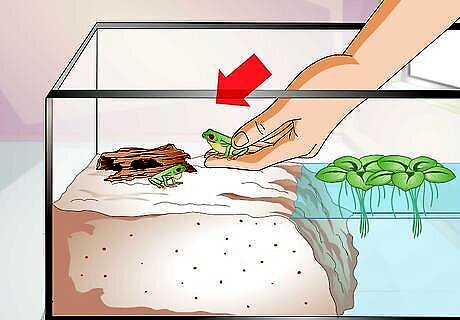
Place frogs ready to breed together in an optimal environment. Learn how to recognize the signs of breeding readiness in your species of frog. You will need to design an environment that mimics the situation in which frogs breed in the wild. Female red-eyed tree frogs will swell with eggs, and males will begin to vocalize frequently. They will need to be moved into a “rain chamber” designed to mimic a rainy forest setting. An overhead hose should provide falling water, and there must be large leaves for depositing eggs.
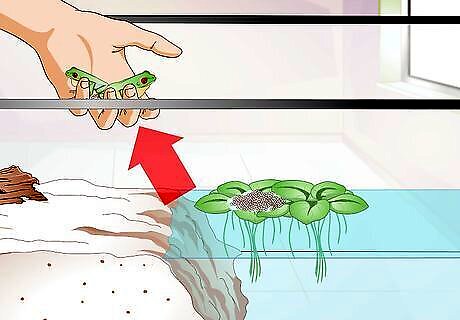
Return the adult frogs to their usual home once their eggs have been laid. Allow eggs to develop into tadpoles, making sure that newly hatched tadpoles can immediately enter warm water. Red-eyed tree frog tadpoles require a water temperature of about 75 degrees Fahrenheit.
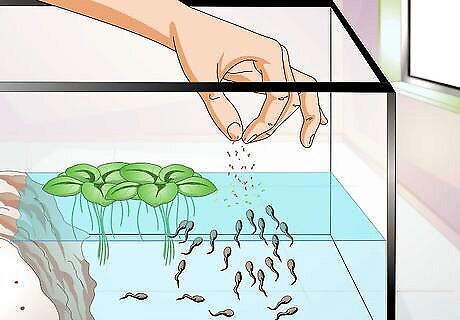
Feed tadpoles with finely-ground fish food. Maintain water quality by changing occasionally, using an aerator, and not allowing old food to linger in the water. Make sure that tadpoles have a way to climb out to air when they become baby frogs. Cover the terrarium with a screen to prevent tadpoles from climbing out.
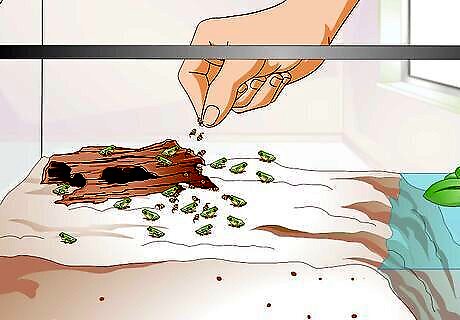
Feed baby frogs on insects such as wingless fruit flies and small crickets. Keep baby frogs moist. Baby frogs may die if they become dried out. Maintain adequate temperatures and simulate day and night using a light source.

Prevent in-breeding by not allowing siblings to breed with one another. Do not continually breed from the same small population of frogs. This decreases genetic variation and may lead to the development of inherited diseases.
Farming Frogs

Have realistic expectations. Frog farming for human consumption is not economically profitable in the United States right now. Most frog legs come from Bangladesh, Belgium, China, Indonesia, Japan, Mexico, and Taiwan. They are often harvest wild there due to the difficulty of intensive frog farming. Be wary of “get rich quick” schemes based on farming frogs for human consumption. Focus instead on producing frog legs for personal or small-scale enjoyment.

Follow any local laws and regulations. You may need to purchase a wildlife breeder’s permit in order to raise frogs. Be sure that your frog farm does not violate local zoning laws or disturb protected species or wetlands.
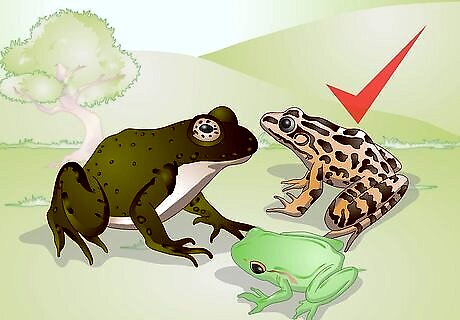
Choose the appropriate species for your purposes. Edible frogs include the green frog (Rana clamitans), the leopard frog (Rana pipiens), the pickerel frog (Rana palustris), and the bullfrog (Rana catesbeiana). The bullfrog is the one most often farmed for food in North America.
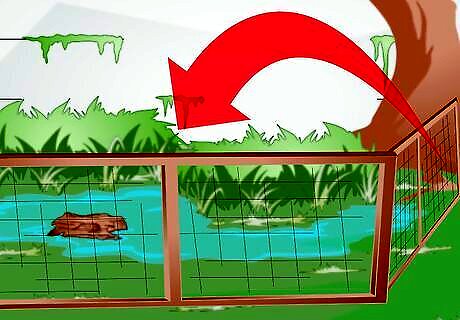
Set up your breeding area. Many frog farms are natural marshes or ponds that have been modified to limit predators, retain frogs, and allow for easy supplementation of food and capture. Set up a fence to protect the area. An adult bullfrog needs about twenty feed of shoreline for its feeding territory. Increase the available shoreline by building inlets, coves, and islands. Ensure that the water is deep enough to protect the frogs and tadpoles from extreme temperatures. In areas with cold winters, six to twelve feet may be required to allow for hibernation in the bottom mud.
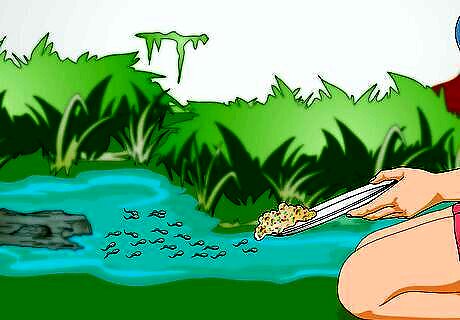
Feed tadpoles on boiled potatoes, vegetables, and meat scraps. Don’t feed them the remains of butchered frogs, because this might transmit disease.

Feed frogs on live insects and small crustaceans. Paying for a supply of live minnows, crayfish, and insects to feed your frogs will be one of the most expensive aspects of a frog-farming operation. However, frogs generally refuse to eat food that is not moving. Use a strong night-time light at outdoor farms to attract flying insects.
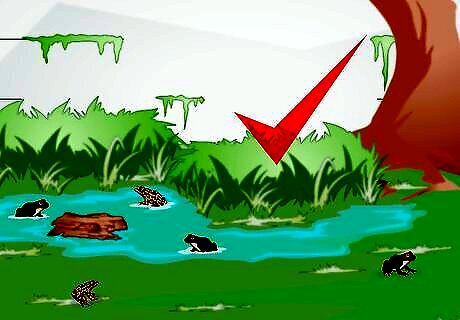
Prevent and treat diseases. Many diseases arise from over-crowding; be sure to allow plenty of room for your frogs. If you see evidence of disease, isolate affected individuals and treat them with antibiotics.




















Comments
0 comment